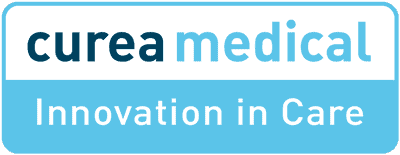Where to Buy Finasteride: Top Sources and Safety Tips
Finasteride 1 mg is available by prescription at major pharmacies (Walmart, CVS, Walgreens, Kroger, Publix, Costco, Safeway, H‑E‑B) and through accredited online platforms like Blink Health and HealthWarehouse. Telehealth providers (Hims, Keeps, Ulo, Happy Head) can evaluate, prescribe, and ship. Topical finasteride is compounded (often 0.25–0.3% with 5–7% minoxidil) and is not FDA‑approved. Verify licensed pharmacies, NABP accreditation, prescriber credentials, and exact concentrations. Review sexual and psychiatric risks, handle safely, and note PSA testing implications; more specifics follow.
Top Places to Get Finasteride (Pharmacies, Telehealth, and Online Retailers)
From brick‑and‑mortar counters to telehealth portals, finasteride is accessible through several regulated channels that differ in convenience, cost, and formulation options. In the United States, finasteride 1 mg requires a prescription, and retail pharmacies such as Walmart, CVS, Walgreens, Kroger, Publix, Costco, Safeway, and HEB routinely stock FDA-approved generic finasteride. Online pharmacies and discount platforms, including Blink Health and HealthWarehouse, dispense by prescription and often list lower per‑tablet prices. Telehealth services such as Hims, Keeps, Ulo, and Happy Head provide virtual evaluations, issue prescriptions, and ship medications directly. For topical finasteride, typically 0.25–0.3% combined with 5–7% minoxidil, compounding pharmacies and specialty brands prepare customized solutions, though these compounded sprays are not FDA-approved products. Buyers should verify concentrations, manufacturers, licensing, and policies.
Safety Checklist: Prescriptions, Licensing, Side Effects, and Handling
Before purchasing finasteride, a structured safety review guarantees appropriate use and reduces risk. In the U.S., finasteride 1 mg requires a valid prescription, obtained through an in‑person visit or telehealth consultation with a licensed prescriber. Buy only from a licensed pharmacy or NABP‑accredited online vendor with secure shipping. Review side effects using clinical data, noting sexual side effects occur in roughly 1.2–1.8% of users, including decreased libido (1.8%) and erectile dysfunction (1.3%). Discuss psychiatric risks, including depression or suicidal thoughts, before initiation.
| Checklist Item | Key Action |
|---|---|
| Prescription | Verify prescriber credentials via telehealth or clinic |
| Licensing | Confirm NABP accreditation and licensed pharmacy status |
| Safety | Screen drug interactions, review side effects, report side effects |
| Special Cases | Pregnant women must not handle crushed tablets; flag finasteride before a PSA test |
Disclose NSAID use and submit adverse events to FDA MedWatch.
Frequently Asked Questions
Can I Get Finasteride Without a Doctor?
No. Finasteride is prescription-only in most countries. A licensed clinician must evaluate and prescribe it, often via telehealth. Avoid non‑prescription sources due to counterfeit and dosing risks. Disclose liver issues, medications, and PSA implications; pregnant individuals must not handle crushed tablets.
How Risky Is It to Take Finasteride?
It carries low-to-moderate risk for most men. Sexual side effects occur in about 1–2% and are usually reversible; rare persistence reported. Monitor mood for depression or suicidality. Avoid in pregnancy, disclose conditions/medications, consider topical to reduce systemic exposure, monitor PSA.
What Is the Most Effective Way to Take Finasteride?
The most effective approach is 1 mg orally once daily at the same time, continued long term. Expect results in 3–6 months, ideally by 12. Discuss risks, PSA effects, and alternatives like prescription topical finasteride with a clinician.
Do I Have to Take Finasteride for the Rest of My Life?
No, but continued use is needed to maintain results. Benefits typically appear by 3–6 months and peak near 12 months; stopping reverses gains within a year. Usual dose is 1 mg daily. Discuss risks, monitoring, and alternatives.
News
Recent investments & divestments
- Buyout

- Recent investments & divestments
- Buyout
- Recent investments & divestments
- Buyout

- Recent investments & divestments


